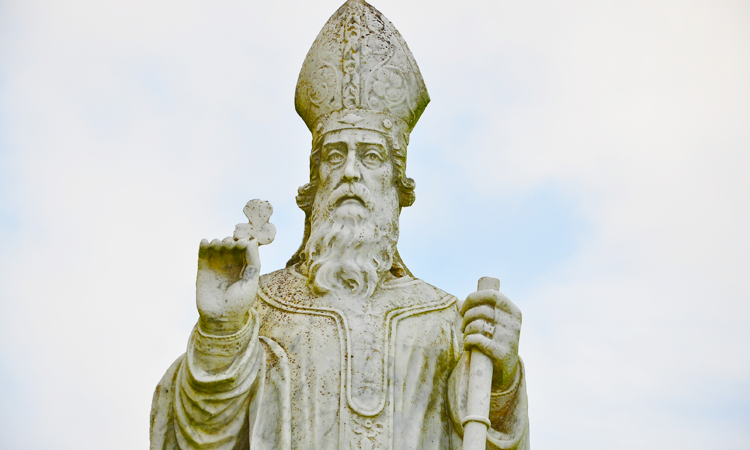
Have you ever wondered why we celebrate St. Patrick’s Day? St. Patrick’s Day began in Ireland as a religious feast day—a day of devotion for the man known as the National Apostle of Ireland and the Patron Saint of Ireland. In the U.S., we celebrate with parades, wearing the color green and other iconic Irish symbols, and a fair bit of drunken rowdiness by many—no need to be Irish to celebrate this saint. Ironically, until the 1960’s, the bars in Ireland were closed on March 17, and the Irish were more likely to “celebrate” by going to church than to a pub.
St. Patrick is known for two amazing feats: bringing Christianity to Ireland and driving the snakes out of Ireland, which may be one in the same. St. Patrick had a difficult childhood. Born in 385 AD in Britain to Roman citizens, he was kidnapped at the age of 14 and was forced, as a slave, to tend sheep for six years. Many years later, he returned to Ireland as a missionary and died on March 17 around 460 AD.
When teaching the Christian theology to the Celts, St. Patrick used the shamrock to explain the Trinity—this three-pronged bloom represented the Father, Son, and Holy Ghost. Lore has it that St. Patrick drove the snakes from Ireland during this time period. Some believe that there weren’t any real snakes in Ireland in the 5th century, since there aren’t any today, and that the “snakes” were actually a metaphor for the evils of paganism.
So where did the green beer come from? Here’s one thought: It was customary to wear a shamrock on your clothing on St. Patrick’s Day in Ireland, and to put that shamrock in your last beverage of the day and drink it.
The first St. Patrick’s Day parties were held by wealthy Irish, in both Ireland and the U.S. In Dublin, balls were held in his honor in the second part of 19th century. Between the 1920’s and 1950’s, worshipers could see a military parade on the streets of Dublin after they attended a Catholic Mass. In the U.S., Irish-Americans began celebrating St. Patrick’s Day in Boston in 1737, and fife and drum parades became common in the 1800’s.
In the 1960’s, St. Patrick’s Day became more commercialized in both countries, and festivals, parades, and Irish paraphernalia became the norm in Ireland, the U.S., and many other countries. Not everyone celebrates with alcohol, though. To the religious, St. Patrick’s Day is still a day to honor and pray for missionaries from the past and from today.
As for the phrase the Luck of the Irish, there seems to be a bit of dispute over its origin. Some say it has to do with leprechauns and their pot of gold. Some say it’s a pun—the luck of the Irish is bad luck. Other’s say that despite the famine, the suffering of many Irish immigrants, and the fight for Irish independence, the Irish have persisted and even triumphed, making the Irish a truly lucky people. I’m all for that kind of luck!
I’ll leave you with this Irish blessing:
May your blessings outnumber
The shamrocks that grow,
And may trouble avoid you
Wherever you go.

Rose Caiola
Inspired. Rewired.

